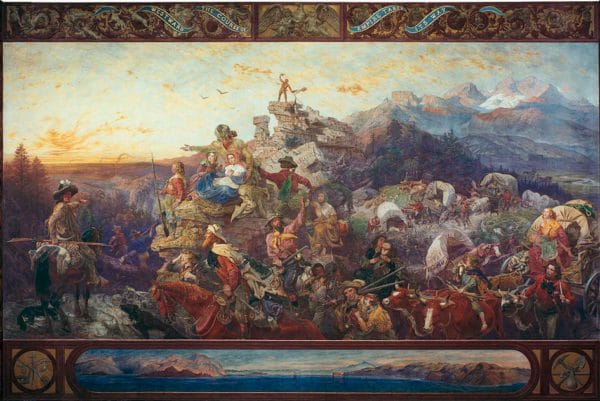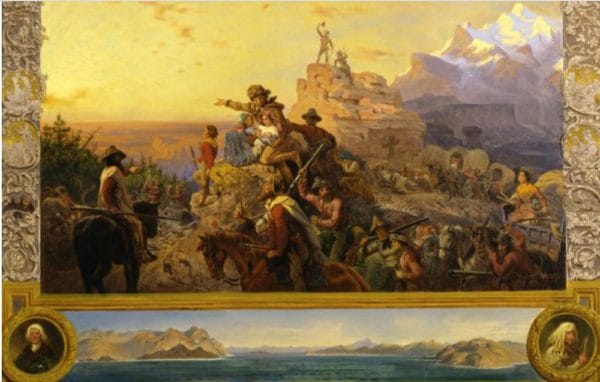
U.S.A. –-(AmmoLand.com)-– In the recent Supreme Court decision of NYSR&PA v. Bruen, the court ruled the proper way to determine restraints on the exercise of Second Amendment rights was to review history and see if restraints on those rights had been widely accepted across the American polities, especially at the time of the ratification of the Second Amendment in 1791 and the ratification of the Fourteenth Amendment in 1868, as the Second Amendment has been applied to the States by the Fourteenth Amendment.
The right to bear (carry) arms for the protection of self and others has long been a part of American culture. The right to do so while traveling was especially elevated. Even an early colonial regulation in East New Jersey, which attempted to limit the right to bear arms, had exemptions for people who were traveling before the regulation was eliminated. The regulation was only tolerated for a few years. P. 6 of amicus curiae briefs on Bruen.
In 1686, East New Jersey enacted a law providing that no person “shall presume privately to wear any pocket pistol, skeines, stilettoes, daggers or dirks, or other unusual or unlawful weapons,” and that “no planter shall ride or go armed with sword, pistol or dagger” except certain officials and “strangers, travelling upon their lawful occasions through this Province, behaving themselves peaceably.”3
The Supreme Court has declared the attitude about carrying arms, close to the ratification of the Fourteenth Amendment, as especially important. A famous mural, painted in the United States Capitol in 1863, is relevant.
The mural is “Westward the Course of Empire Takes Its Way, by Emanuel Leutze”, and is located in the West grand staircase of the House wing. It is 30 feet wide and 20 feet tall.
The mural shows 32 individuals traveling toward the West. There appear to be 27 adults, 19 of them men and eight women. There are five children, including two infants.
At least 12 firearms are shown in the mural, including ten long guns and two pistols. The woman under the word “Westward” in the top border has a long gun. A long gun is prominent in the lower left corner of the mural, and a revolver in the lower right corner. There are two boot knives evident and two bows with arrows.
The study version in 1861 had half as many firearms, five or six, none in the lower corners or in the border. On the mountaintop, there is one or two long guns. It is uncertain. There do not appear to be any boot knives or bows and arrows.

The people who supervised the painting apparently asked for more firearms, as several were added compared to the study image.
The mural was painted from 1861 to 1862. It was painted only 6 years before the ratification of the Fourteenth Amendment. It is closer in time to the Fourteenth Amendment than the Dred Scott decision mentioned in Bruen, from 1857. From the Bruen decision, p. 4:
A short prologue is in order. Even before the Civil War commenced in 1861, this Court indirectly affirmed the importance of the right to keep and bear arms in public. Writing for the Court in Dred Scott v. Sandford, 19 How. 393 (1857), Chief Justice Taney offered what he thought was a parade of horribles that would result from recognizing that free blacks were citizens of the United States. If blacks were citizens, Taney fretted, they would be entitled to the privileges and immunities of citizens, including the right “to keep and carry arms wherever they went.” Id., at 417 (emphasis added).
The mural depicts what Chief Justice Taney noted. American citizens could keep and bear arms wherever they went.
About Dean Weingarten:
Dean Weingarten has been a peace officer, a military officer, was on the University of Wisconsin Pistol Team for four years, and was first certified to teach firearms safety in 1973. He taught the Arizona concealed carry course for fifteen years until the goal of Constitutional Carry was attained. He has degrees in meteorology and mining engineering, and retired from the Department of Defense after a 30 year career in Army Research, Development, Testing, and Evaluation.

from https://ift.tt/xb5ZPfE
via IFTTT

No comments:
Post a Comment